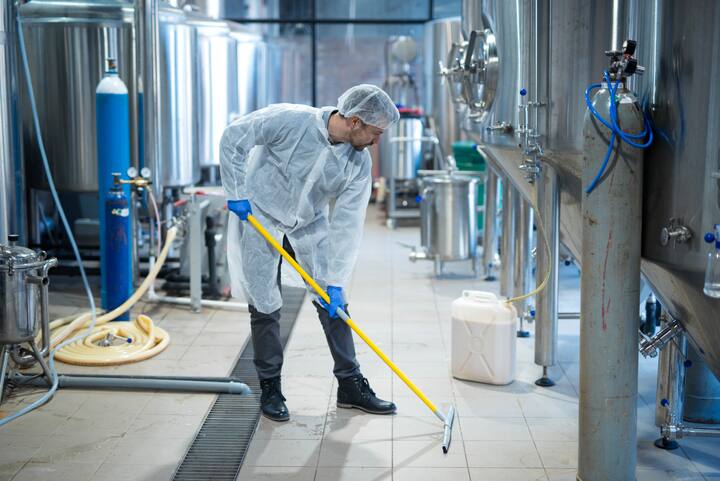
What is cross-contamination and how can you prevent it?
What is cross-contamination and how can you prevent it?
Do you work in a company that produces food? Then you have probably heard the term cross-contamination. To prevent illness, it is important to avoid cross-contamination. But what exactly is cross-contamination and how can you prevent it?
What is cross-contamination?
Cross-contamination is the contamination of food with microorganisms, allergens, chemical substances or physical particles that do not belong there. In the case of allergens, chemical substances and physical particles, we also refer to this as contamination. Cross-contamination occurs, for example, when raw products and cooked products are not (properly) separated. Microorganisms present on the raw product can then be transferred to the cooked products. If pathogenic microorganisms are present, these microorganisms can grow in the cooked product and cause spoilage and/or illness. In the case of allergens, cross-contamination occurs when a product that does not contain eggs is contaminated by residues from an egg product. Consumers with an egg allergy will experience allergic reactions when eating the contaminated product. Such allergic reactions must, of course, be prevented.
How can you prevent cross-contamination?
By following the statutory HACCP standards, hygiene codes and/or quality systems (based on HACCP), you can set up a system of procedures, work instructions and checks to prevent cross-contamination. Some general measures you can take:
Clean the production line.
Ensure proper production planning, with products without allergens being produced first, followed by products with the most allergens.
Close off the production line so that no physical parts can fall into a boiler, for example.
Ensure that employees apply hygiene rules, such as not wearing jewellery. Do not store personal items in work clothing.
Keep raw and cooked products separate in terms of space, time and employees.
Store products in closed packaging.
A clear quality system
A quality manual or approved hygiene code sets out the procedures, work instructions and checks you must carry out to work in a food-safe manner and thus prevent cross-contamination. Ensure that you have a clear quality system in place and inform employees within your organisation of the procedures and instructions. If in doubt, ask a Quality Assurance advisor for help. They know exactly what to look out for and how to comply with legislation, as well as certification standards such as BRCGS, IFS and FSSC 22000. The advisor will also help you to implement the procedures effectively in practice.
Good training is essential
Explaining established procedures and work instructions clearly to employees ensures knowledge and understanding. By providing sufficient and appropriate training and instructions, employees are aware of all the rules for preventing cross-contamination.
Don't have the time or in-house knowledge to put together a training programme yourself? Take a look at our training offering to quickly provide your employees with the right training, such as via E-learning. With the E-learning Basic Food Safety course, your knowledge of food safety will quickly be up to date. Or consider an E-learning course on allergen control in production.
Monitoring and continuous improvement
By regularly checking whether work instructions are being followed in practice, you know exactly where there is room for improvement within your company. For example, carry out periodic hygiene inspections. With digital inspections, you can inspect quickly and efficiently and use graphs to gain insight into areas for improvement within your company at any time.
You can then invest the time you save in implementing improvements. This prevents cross-contamination and ensures a food-safe product.
Analyse
To ensure that you have not overlooked any cross-contamination and that the product meets microbiological requirements, you must regularly carry out microbiological testing. Have end products microbiologically tested for a number of parameters, such as surface testing to check that cleaning is sufficient.
More information
Would you like to prevent cross-contamination and could you use some help with this? Our QA advisors are happy to assist you every step of the way. For example, with a QA subscription, our advisors will work with you to build your quality system.
From determining control measures to practical implementation. Would you like to follow a suitable training course on cross-contamination, digitise quality matters, have laboratory tests carried out or have a sampling plan drawn up? We are happy to help you with that too. Please contact us.
Want to be the first to know about the latest knowledge articles? Follow our LinkedIn page.
Auteur: Angelique van Oostveen
Senior adviseur QA